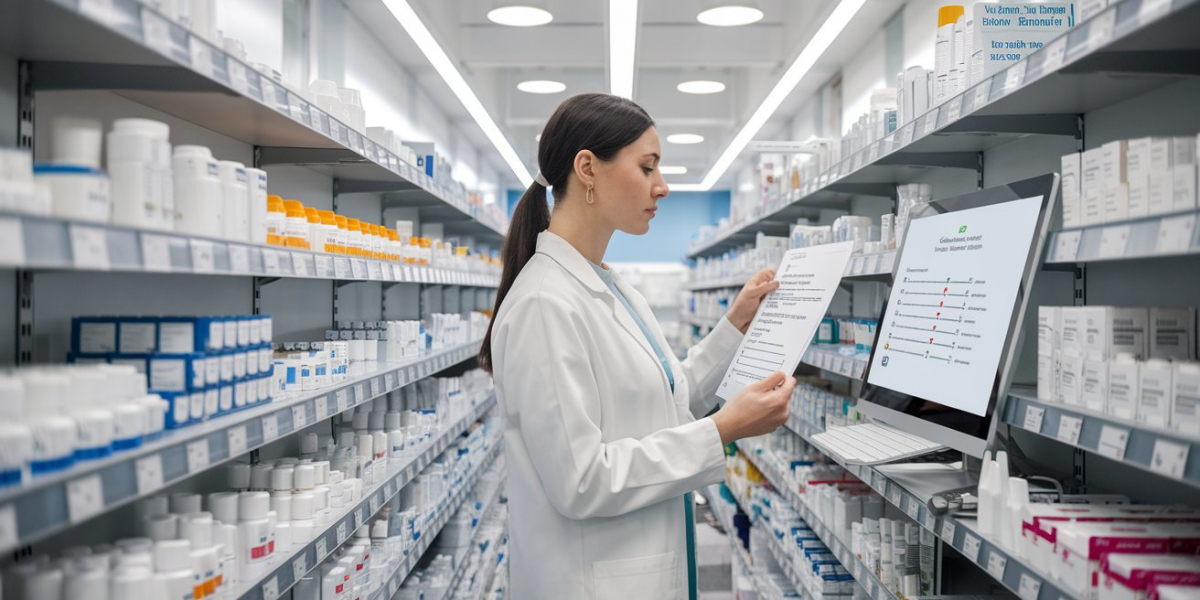
The pharmacy plays a crucial role in the healthcare sector in dispensing appropriate drugs to patients in time and to the right patient. Pharmacy quality assurance programs therefore are important to ensure that these products are delivered within the best standards of care and security. Among the qualities monitored by these programs is the Pharmacy Quality Assurance Form—a standardized tool to monitor the quality of services dispensed in pharmacies. This form helps in error detection, determination of regulatory compliance, and patient safety; therefore, it will be an essential part of any pharmacy's QA framework.
Why Do Pharmacies Need Quality Assurance Forms?
Quality assurance forms for pharmacies serve as a tool for continuous improvement in the services provided. The forms have been tested on many occasions to reduce the chances of errors in medication and ensure safety for the patient. In a nutshell, pharmacy QA forms include:
- Error Reporting: Medication errors are reported properly with monitoring in place. Thus, an issue is dealt with sooner than later.
- Compliance Monitoring: Quality Assurance forms help pharmacies stay compliant with regulatory standards and accreditation requirements such as the Joint Commission, FDA, etc.
- Process Improvement: They help pharmacies find faults in their workflow and implement ways for improving the overall quality of service.
- Patient Safety: The form ensures that the aspect of patient safety does not lag behind as all such incidences are documented and researched upon, such as a dispensing error or adverse drug reaction.
Pharmacy QA Form Major Elements
A well-written pharmacy QA form contains various elements that are to be recorded so nothing is left outside the account. These elements assist in making sure quality is maintained in every sphere of activities carried out in the pharmacy.
1. Incident Reporting
The reporting area of the incidents is one of the most important sections of the QA form. This section captures any medication error, such as the wrong medication dispensed, wrong dosage, or failure in appropriate labeling procedures. In an incident report, the following are usually included:
- Date and Time: When the incident occurred.
- Medication Details: Name, dosage, and prescription details of the involved medication.
- Description of Error: Brief account of the error, how it was detected, and what could have caused it.
- Immediate Action: Actions taken to correct the error or brief the patient, if so required.
This section is very vital for follow-up of repeated problems and to identify the root causes of those problems so that pharmacies can take corrective action before the next occurrence.
2. Prescription Accuracy Monitoring
Prescription accuracy monitoring is part of what pharmacy QA forms entail. This involves checking that the medication contained in the package matches the one on the container and patient's medical records. Routine checks should be conducted, ensuring that:
- The correct drug is dispensed.
- The accurate dose is dispensed.
- The appropriate method of taking is dispensed.
- All conceivable drug interaction checks are conducted.
With routine documentation and prescription accuracy review, the potential harm caused by medication errors is prevented.
3. Compliance with Storage Standards
The storage of drugs must be kept safe and in line with effectiveness and safety standards. QA forms typically have an entry for monitoring the storage of pharmaceutical products. These typically encompass:
- Temperature and Humidity: Checking if the drugs are kept at appropriate levels.
- Stock Rotation: Checking on medications for rotation based on expiry dates.
- Security: Ensuring proper restrictions on controlled substances to prevent misuse.
Compliance with these requirements not only ensures the quality of medications but also brings the pharmacy in line with industry practice.
4. Staff Training and Competency
Staff training and competency have become an integral part of the Pharmacy QA template, as this is one of the factors that gives assurance that the pharmacy staff are well-trained to minimize errors and provide excellent quality of service. The section usually contains:
- Training Records: The documentation of the staff members' ongoing training.
- Competency Assessments: Maintaining a log of regularly conducted appraisals of staff performance.
- Continuing Education: Maintaining a log of continuing education programs for keeping abreast of new developments in pharmaceuticals and regulations.
Documentation of staff training is essential to ensure that all staff working in the pharmacy is competent enough to function at an optimal level.
5. Patient Feedback and Satisfaction
Details about patient feedback surveys must be collected in order to understand, from the customer's viewpoint, whether the quality of service was good. Very often, QA forms have a section on writing or recording feedback from patients and satisfaction surveys. This helps in many ways, such as:
- Determining where the pharmacy is weak concerning the quality of the services provided.
- Giving an idea of how pleasant staff has been when dealing with patients and handling their queries.
- Providing a showcase of the strengths of the pharmacy in this regard, helping in further enhancement in this field.
Questionnaires for patient satisfaction are of importance in enhancing patient-centered care and enhancing confidence between the pharmacy and customers.
6. Drug Utilization Reviews
Drug Utilization Review (DUR) is one of the most vital processes that have to be documented on a pharmacy QA form. It is the process of reviewing patients' drug profiles for safety and appropriate use of prescribed drugs. DURs may help alert to the following problems:
- Drug Interactions: Ensuring new prescriptions will not interfere with existing drugs.
- Duplicate Therapy: Identifying patients who are placed on multiple medications that achieve the same effect.
- Non-Adherence: Verifying that patients are actually taking their prescribed regimens.
With regular DUR checks, pharmacies can avoid adverse drug events and ensure that patients receive the best possible treatment.
Recommended Practices for Pharmacy QA Forms
While QA forms are quality assurance tools, their efficiency depends on proper execution and use in the pharmacy. Here are some best practices to help heighten the effectiveness of pharmacy QA forms:
- Routine Audits: Hold periodic audits to review and analyze data received from the QA form. Through these scheduled audits, trends are established and areas that need improvement are identified.
- Staff Involvement: Involve all pharmacy staff in the QA process and educate them on the importance of filling out the QA forms and their proper utilization.
- Actionable Changes: Develop actionable changes based on the data provided by the QA forms. For example, if repeated dispensing errors are identified, consider revising workflows or retraining staff.
- Timely Reporting: Encourage timely reporting of incidents and completion of QA forms. Delays in documentation can lead to incomplete records, making it difficult to identify the root cause.
- Continuous Improvement: Treat the QA form as a living document that evolves with the changing needs of the pharmacy. Regularly update the form based on changes in industry standards, legislation, and organizational goals.
Meaning of QA Forms for Patient Safety
The Pharmacy Quality Assurance Form is a regulatory tool that goes beyond compliance; it is a critical instrument for improving patient safety. Through systematic documentation of errors, compliance monitoring, and feedback gathering, QA forms help pharmacies identify areas for improvement. When used effectively, these forms contribute to a culture of continuous improvement, ensuring that patient care is safe, efficient, and of the highest quality.
Get a Firsthand Look: https://axonator.com/request-for-demo/
About Axonator Inc:
At Axonator, our vision is simple yet powerful: to enable the world on mobile. We envision a future where every aspect of business and society is seamlessly connected through mobile devices. Our mission is to empower businesses worldwide to leverage the full potential of mobile technology, transforming the way they operate, communicate, and collaborate.
Contact:
Axonator Inc. (The World On Mobile)
Austin, TX, USA
USA: +1-716-274-8885
India: +91-8600-032-635
Email: support@axonator.com
Website: https://axonator.com/









